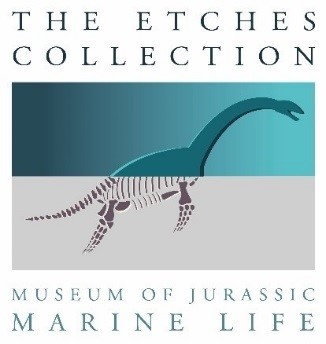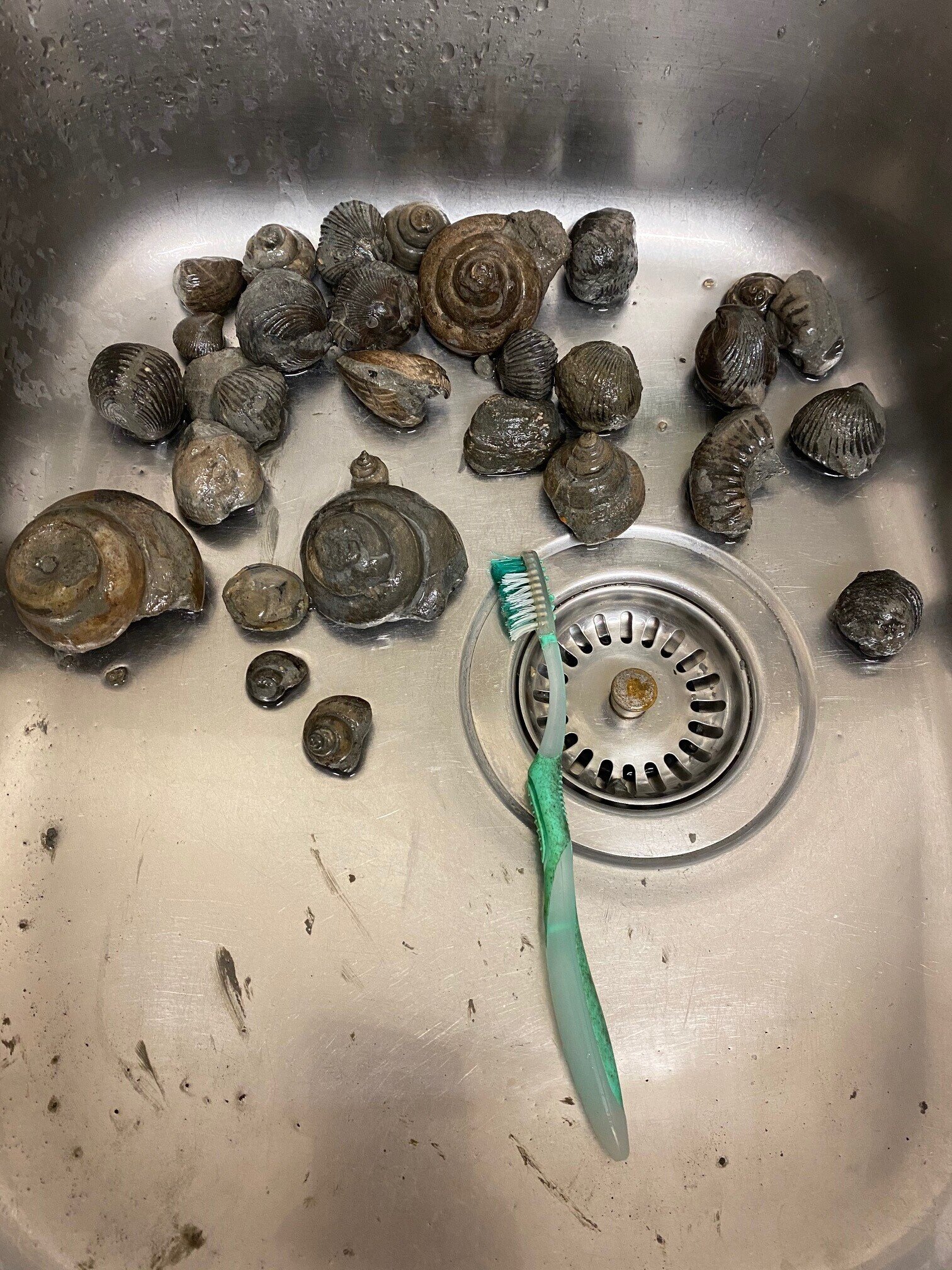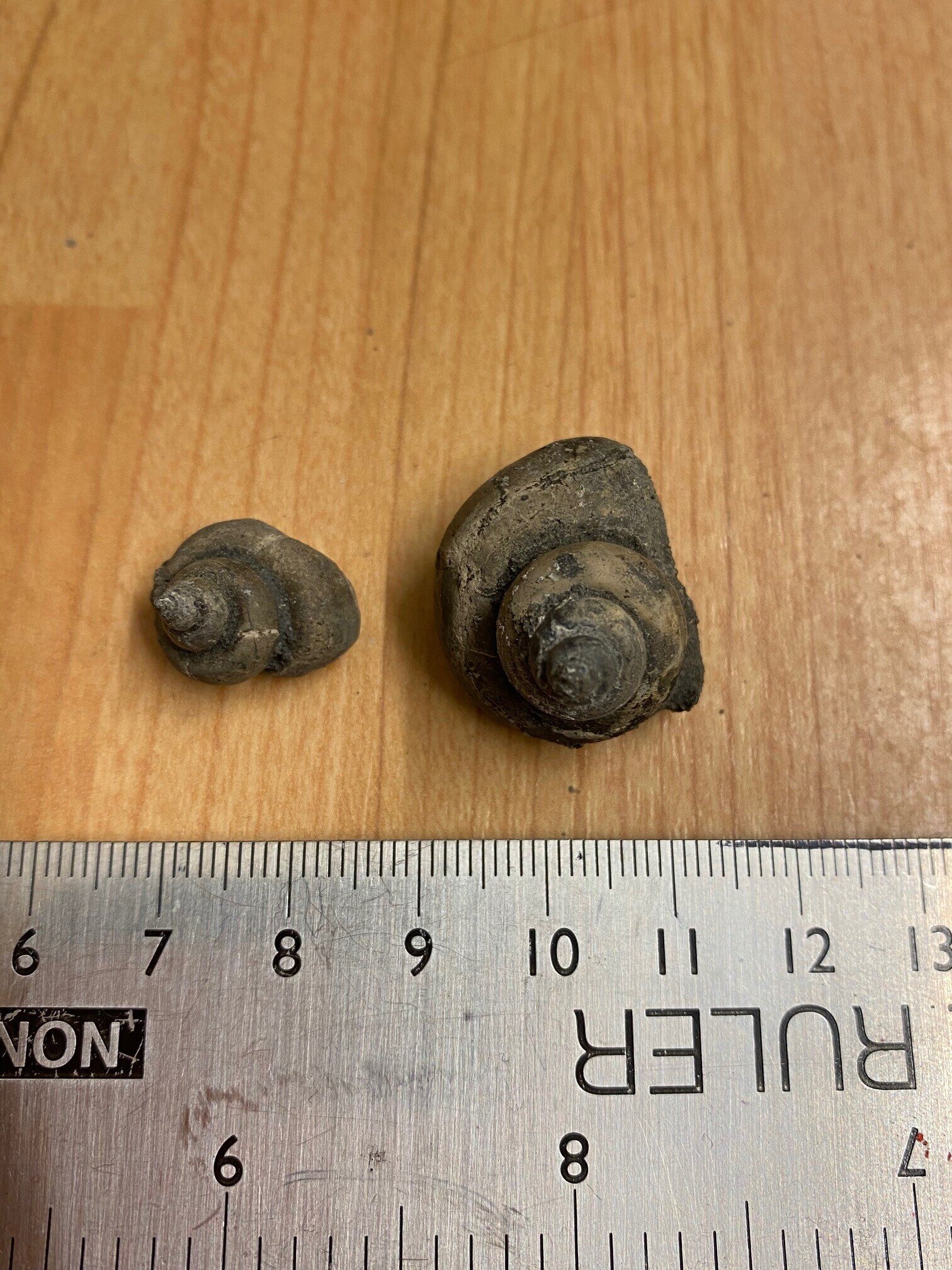Reminiscing at Ringstead
/By Carla Crook, Etches Collection PR Manager (& Steve’s daughter!!)
With the museum currently in lockdown, Tuesday gave the perfect opportunity for Dad and I to get ‘out of the office’ and into the field, albeit a different ‘office’ for Steve in comparison to his usual hunting ground of Kimmeridge Bay!
However - it was back when I was just a little girl that Steve began his fossil collecting at Ringstead, we would all go as a family and have great fun picking out the Branchiopods, Gastropods and other fossil delights from the sticky clay. Steve has certainly had some significant finds from Ringstead during his early years collecting, I wonder what, if anything, we’d find today??
So for me, this was my first visit to Ringstead in what has to be about 40 years. Steve’s last visit was over 4 years ago and he was keen to see how the exposure of Ringstead has changed over the years back from when his forays into collecting were at their infancy.
It was a mild but windy afternoon and we were greeted with the enormity of 5 cruise liners moored up in Weymouth bay, towering above the water. I always wonder how these ‘hotels of the sea’, so tall like apartment blocks, traverse across the oceans without capsizing, they look so ungainly in their design!
Coming from the car park, we dropped straight down onto the beach to the left, looking towards White Nothe and began to take a look at the slumped Lower Kimmeridge Clay immediately exposed by the footpath onto the beach. I have to admit I felt like a kid again and the smell of the clay took me right back to those early days of fossil hunting at this very spot so many years ago.
A geology lesson from Steve as we moved past the lower level Kimmeridge Clay (where I had made a few nice little discoveries – see photos below), and into different geological formations displaying the Corallian-Kimmeridge boundary, it was fascinating to hear Steve’s stories about some of his past discoveries from Ringstead, what finds to look for in each different exposure, scouring the cliffs but also down to the waterline, keeping eyes open for washed out Kimmeridge Clay nodules in the foreshore that might contain hidden ammonite discoveries.
Dropping past the new sea defence jetty we scoured the slightly darker, Kimmeridge clay looking for potential reptile specimens but none to be found today. It gave Steve a chance to reflect and ponder upon how the new sea defences now in place have completely changed the environment for collecting at Ringstead (for the worse). Steve remarked how the Portland Stone rock armour jetty put in to protect the dwellings up on the cliffs, have now fully obscured the basal Kimmeridge Clay exposures hence only a small section remaining now on the east and west sides of Ringstead and that the deposits of shingle on the beach have been built up, meaning that new fossil finds are that much more difficult in comparison to the times before the defences existed. Steve noted with regret that the beach defences carried out have completely obscured the type locality for which Ringstead was previously so well known for - an SSSI site, noted for the contact of the top of the Corallian onto the base of the Kimmeridge Clay. English Nature brought in experts who decided that the type locality would be changed from Ringstead to an inland quarry called South Ferraby in Yorkshire, near the River Humber. We have heard the sad news that this quarry is now to be filled in, meaning that geologists have lost these important exposures. He feels it is a shame SSSI sites such as Ringstead are not ‘worth the paper that they are written on’ in terms of the protection they should give. Our walk took us past Burning Cliff with the Portland Stone above, where we could see the many slips that have changed the face of the Upper Kimmeridge Clay cliffs along this section and up to the chalk cliffs of White Nothe and beyond the corner where time passes from the Jurassic to the Cretaceous. It was at this point that we turned around and took a slow walk back to the car park at Ringstead, slightly hindered by the wind and a drizzle of rain, taking in the view of the cruise liners and Weymouth and Portland beyond.
Back home, with my little cloth bag (borrowed from Steve, as a complete and utter amateur I came to the beach ill prepared!), I engaged my daughters in the joy of cleaning my fossil discoveries, some warm water and a toothbrush we gently removed the clay and revealed the treasures beneath (my favourites - a little section of a lobster claw and a piece of reptile bone). How exciting, to be the first person in hundreds of millions of years to see these ancient creatures for the very first time………I can see now how Steve, my Dad, finds collecting so incredibly exhilarating!!
Join me again soon, but until the next time, take care
Carla
(Disclaimer….always make sure you follow the ‘Fossil Collecting Code’ and adhere to any restrictions of the locality that you are visiting. For more information, see the ‘Etches Guide to Safer Fossiling’ HERE)


















